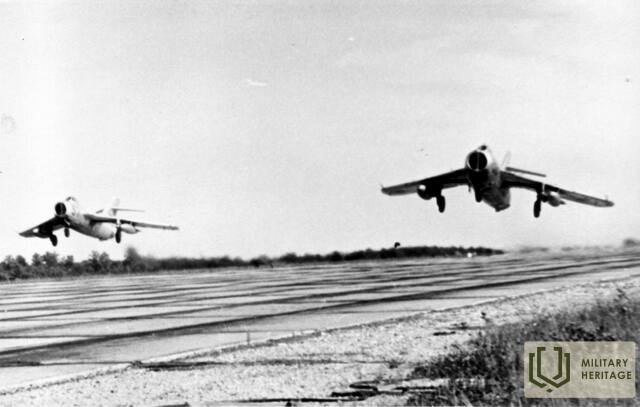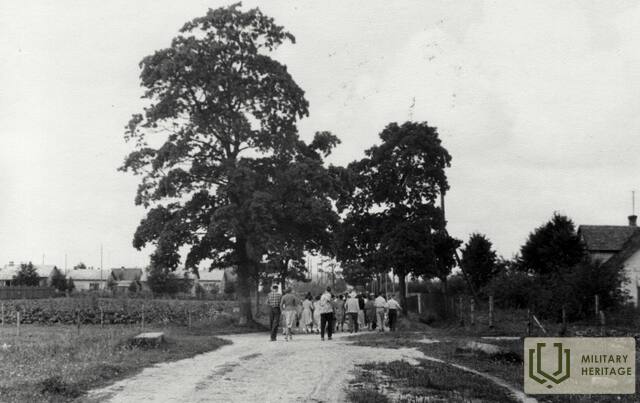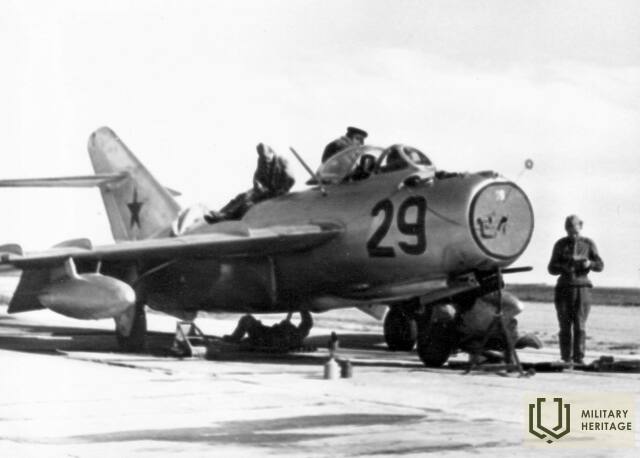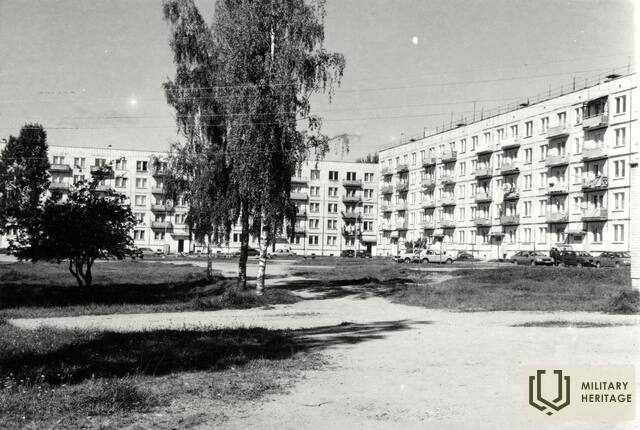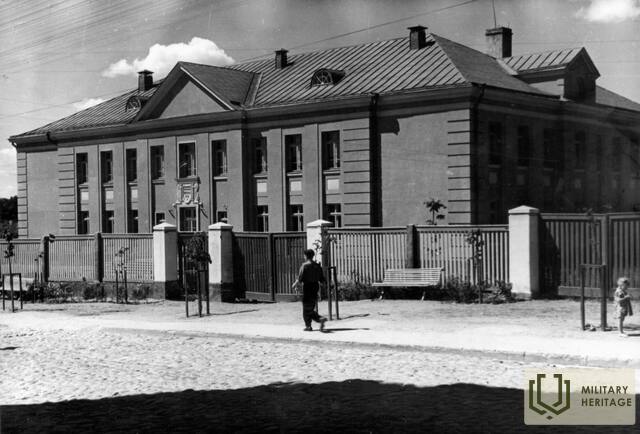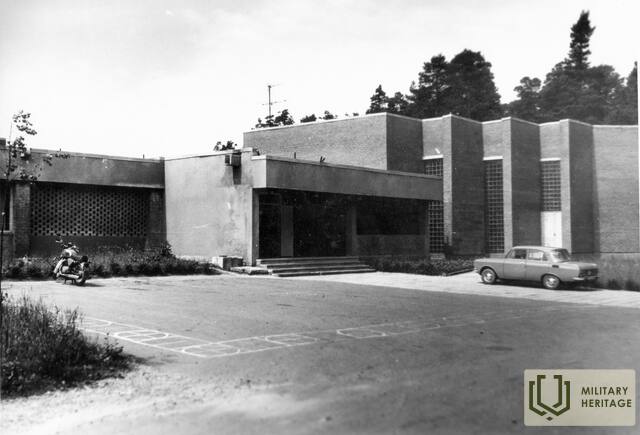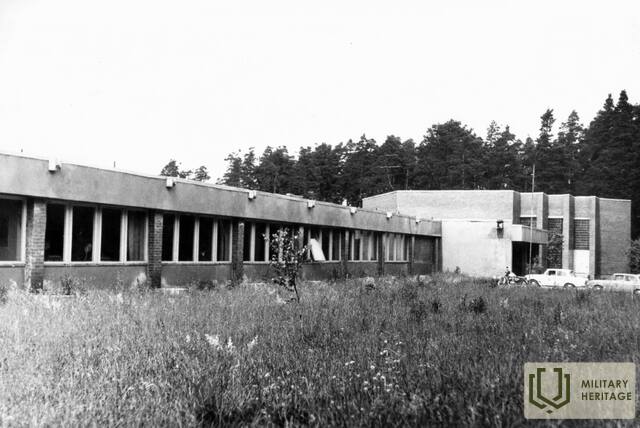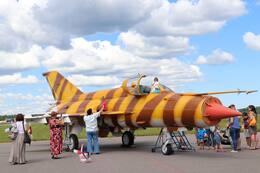Were nuclear warheads buried at Tukums airfield?
Former commander of the guard Aivars Skurstenis has applied for an open conversation to the Tukums district newspaper "Neatkarīgās Tukuma Ziņas". He was once a reserve officer and a front-line bodyguard, who in 1993 was offered a guard position in the agricultural company "Durbe" headed by Laimonis Mucenieks. The office - Līvāni house - had to be guarded there. That is the beginning of the story.
A. Chimney:
- I guarded for less than a month when the representatives of the Ministry of Defense came to inquire about the organization of security, because there was still a Russian army at the airport. I was offered to be the commander of the security command and a month later I was awarded the rank of deputy officer and gave an order in my hand that I was confirmed as the commander of the security. The documents were signed by Dainis Turlais. Already in 1996 I went for training in Denmark and then there was a merger of the Defense Forces and the National Guard. Juris Dalbiņš was appointed Commander of the National Armed Forces (due to the pressure of the National Guard). It's a bit out of history.
We brought the first part of the soldiers to the airport on October 12, 1993, although the instructors worked much earlier. Even then, there was still a Russian army inside the airfield, controlling all the posts and headquarters. Agrofirma "Durbe" immediately took over all oil bases and also the headquarters of the airport commander Turčin.
But, the so-called "deaf-mound" part, was bounded by three fences - one plank and two barbed wire. There were two hangars where there may have been nuclear warheads, but it was more likely that there were uranium-enriched bombs (uranium improves power and penetration) to destroy certain objects (the Americans used them in the Gulf War in 1991); because, however, nuclear warheads are used for medium-range and similar missiles launched from mines or mobile launchers. In the "Andalusian part of the airport" - near the barracks - there was one lead-lined hangar, possibly containing short- or medium-range missiles. They could indeed carry nuclear warheads, but this area was not in our security zone and the lead plates were looted. If there was any radioactive radiation, then most likely some of the lead thieves are already underground ...
Colonel Kārlis Kīns, who knew these things well, claimed that there was a so-called "50 complex" - a mobile rocket launcher, but it was removed in the late 1970s ...
At the time of Gorbachev's arms reduction treaties, the Russians had decided to ridicule those Western men - literally disguised the bomber pilots and other personnel in naval aviation uniforms for a few days (the pilots themselves were upset about it), but something didn't work out for them. .
Chemistry buried in the ground
- What do you know about the "deaf part"?
- There were two caponer-type hangars with hoists and equipment to maintain a certain temperature. Unlike others, their entrance was hidden behind a wall of concrete blocks; missile warheads could indeed be stored there;
- But there was a bus station next to it? ...
- There was a warehouse, but not for storing ammunition; most likely - a place for rocket mounting. Speaking of the fact that something could be left on the ground ... When I started to lead the aerodrome security, I studied at the National Defense Academy in parallel, where, among other things, Captain Gunārs Opmanis taught about weapons of mass destruction. He was a professional chemist and took an interest in the airfield because I told him that the Russians had left both chemical protective clothing and a large stock of litmus. I wanted to find out exactly where the day was ... Otherwise - Colonel K. Kīns is coming, we are doing an inspection in the lockers and we find the cartridges of a large caliber machine gun with bullets. Soldiers at headquarters found!
Together with Captain Opman, we walked around the entire airfield and checked that the radiation background was not elevated anywhere (including in the captains). There could be a slight danger on one of the hills behind the warehouses - if you stayed there longer, your head started to feel dizzy. Captain Opmanis explained that it is not from radiation, but most likely some chemistry is buried in this place. We guarded the place especially because there was a whole warehouse with the so-called - HIMDIM - used chemical protection spectra. In a separate white brick building there were metal barrels and ampoules with deactivating liquid for washing spectra. These ampoules were stolen by local boys, because - when one of them was torn at school, they could not enter the day class - they stinked so terribly.
While on course in Denmark, I was replaced by Captain Tislonoks, who ordered me to bury those barrels in the ground - most likely they have already rusted and the soil is contaminated. It would be worth exploring. Captain Opmanis, who had carried out a chemical analysis of these barrels, said that they were different chemicals - ammonium chloride (used in horticulture), dichloramine -T - disinfectant, chloramine (so-called soap medicine) and barrels - honethanolamine (industrial reagent). What was they used for? We do not know. It should be noted that in one place, however, increased radiation was indicated - in the "deaf-mare part" all kinds of aircraft spare parts were standing in one building. Captain Opmanis checked the back of a cockpit manometer and, to our surprise, the background significantly exceeded the norm. Interestingly, nothing was shown on the side of the screen, but there were obviously some radioactive elements on the back ...
Both an andele and an illegal distillery
- When the Russian army gathered outside, tried to sell everything that was movable or immovable?
- Yes, it was - and all that could be moved - old bobsleighs. I was asked if I wanted a 5.45 mm machine with a set of 300 war cartridges for LVL 130 with all Russian papers. It was big money at the time. We offered a completely new small-capacity generator with an internal combustion engine - with this we were able to provide electricity to our entire barracks - for LVL 70 ...
At that time, the war in Chechnya began, and at the expense of this war, Russia "wrote off" a lot of weapons. I know from unofficial sources that ground-to-air missiles were also found in Chechnya. What did the Chechens fight with? With Russian-made weapons, and stocks were constantly replenished ...
But many of our men in the Ministry of Defense had purely economic interests - a good example was the company Rhubarb, founded under the auspices of the Ministry, which allegedly was engaged in the production of mineral water at the airport. mineral water - Ed.). My boys sat on the captain and recorded everything with binoculars - also that one night a whole train tank was buried in the ground. That's why we became unwanted - we guarded too hard ...
No army reveals its secrets
- Did Russian officers tell you what was stored at the airport?
- Yes, there were speeches. There was such an old man Mihaličs - he worked as a cook; the wise man was. He said that in the 1960s there was an idea to store nuclear weapons here - even a hangar was built, but the plan remained unrealized. There is no information about the "deaf mammals" because they were part of a state. They could be entered only with special passes. It is known that there was a special storage room for ground-to-air missiles, because they still have to be assembled before being launched or tested in a landfill.
- I was surprised that there were special concrete watchtowers with manholes around the "deaf" part.
- Such towers are located not only in and around the airfield, but one - for shooting, even on the side of Ventspils highway. There are many such towers.
- What is known about underground passages or bunkers - so many stories heard?
- I have not seen it myself, but I have heard that I was driving along the underground passage after ammunition. In principle, Turčina's headquarters were taken over by L. Mucenieks after the Russians left, and if there was a bunker, it was walled up and concreted. The commander of such an aerodrome will never sit at the "naked" headquarters - according to legends told at the time, one of the underground passages led from Turčin's headquarters to the "deaf part". There seems to be one such bunker whose passage breaks; heard that there is even a 25 m shooting range inside, a weapons storage room and the like. This could also be the case - simply at the time we entered, everything was very carefully concreted and masked; left to history.
- Didn't the Russians leave documents on all communications when handing over the airfield to the Latvian side?
- I have seen the deed of transfer - there was a whole list of inventory and total value, but no paper on communications. In my opinion, this is the plan - it was necessary to show that the Russian army is going solidly, but no army is revealing its secrets. If anything was important, it was hidden as much as possible.
The airfield was destroyed by kangaroo hands
- However, the collapse of the Soviet Union came suddenly, military facilities in the Baltics had to be left in a relatively short time. And - what happened to the strategically important airports in Latvia? As soon as the army was about to leave, look - there is already a private company related to the Russian side inside ... The same Vasily Melnik, one of Latvia's millionaires and Godmanis' adviser (!), Once graduated from the Alksky pilot school, influential people in the port and shipbuilding business. "In my opinion, this was Russia's plan - to push its people into strategically important objects and lead them to the brink; the military legacy left by the Russians could not be allowed to become a bridgehead for a foreign army. "
A living example is a transport aviation airport in Jekabpils. If the cover of Tukums airfield was able to carry 1600 t per axle (it is a very high load capacity), then Jēkabpils airfield - 1900 t! But what happened? The status of a reserve aerodrome was also determined for Jēkabpils airfield, and it was taken over by one German company, which in the end turned out to be related to Russia. What do we know about Jekabpils Airport today? Nothing, because there is no such thing anymore.
At one time, every professional realized that Tukums Airport is in a much better condition than Lielvārde Airport, although officially it was claimed otherwise. Lielvārde airfield is created in a swamp with damaged drainage, it overgrows and drowns. In Lielvārde, some of the plates were also stolen, almost none of the buildings and yet it was considered more valuable than Tukums airfield, although even the repair hangars were in perfect order here - with all fire pumps (during my time one soldier accidentally turned on and the foam started to fall); only the barracks and the club were in poor condition. But this is already insignificant; but everything related to the airfield was in perfect condition (currently NATO has allocated 31.5 million lats for the renovation of the runway and infrastructure of Lielvārde airfield and an additional 5.5 million - for the Ministry of Defense. - Ed.)
Our watch wire was like a toothache for top management. We - the soldiers led by the guards - but we thought that Latvia needed an airfield - will have their own jobs, so we tried to protect everything. We collected all the half-useful furniture in one hangar, but I was sent to Denmark, another commander was appointed, and the hangar was looted ... we reported to the management, but it turned out that everything was coordinated ... ”
- Then it turns out that the leadership of the Ministry of Defense was also corrupt and made decisions unfavorable to Latvia?
- I have not said it and I cannot prove it, but all the Ministers of Defense have visited the seemingly insignificant Tukums airfield - T. Jundzis, JA Trapāns, VV Pavlovskis and State Secretary J. Davidovičs, not to mention the Commander of the Defense Forces Daina Turlo and the NAF Commander Juris Dalbiņš. We see the forces supported by Mr Turlais today (who ran in the Sleser party in the municipal elections, he was previously a member of two left-wing parties; we know what Laimonis Mucenieks, the director of the bankrupt agribusiness "Durbe", was and is doing today? How could a simple long-distance driver from Jelgava get the right to operate an aerodrome? Why did L. Mucenieks stay in Jurmala, a hotel maintained by Russia? ...
Interview from the newspaper "Neatkarīgās Tukuma Ziņas"
Related objects
Aviation Museum “SKY ZOO”
The Aviation Museum “Sky Zoo” is located in Smārde parish, Tukums municipality, in the territory of Jūrmala Airport that was once the Tukums Military Airfield. The exhibit includes aircrafts YAK-40, AN-2, SU22M4, PZL TS-11 Iskra and a helicopter MI-24. Tour of the airfield includes hangars, caponiers and engineering equipment. The airfield was used by both the German and Soviet armies. During the Soviet occupation it was one of the most important military airfields in the territory of Latvia. The fighters stationed there were intended to attack enemy ships and bomb coastal fortifications. On the night of 9 November 1975, a battle alarm was received at the Tukums airfield – there was enemy warship in the territorial waters of the Soviet Union (in the Gulf of Riga), and it had to be destroyed. Several planes took off from Tukums. However, it turned out that it was the Soviet naval warship ‘Storozhevoi’ (Guardian) on which an armed mutiny against the existing Soviet regime took place. When the planes reached the warship, the battle was still ongoing. Later the rebel leader Valery Sablin, a Soviet naval officer, was wounded and the mutiny ended. He was sentenced to death for treason. This was one of the most dramatic events showing the discontent with the regime and marking the approach of its collapse.




